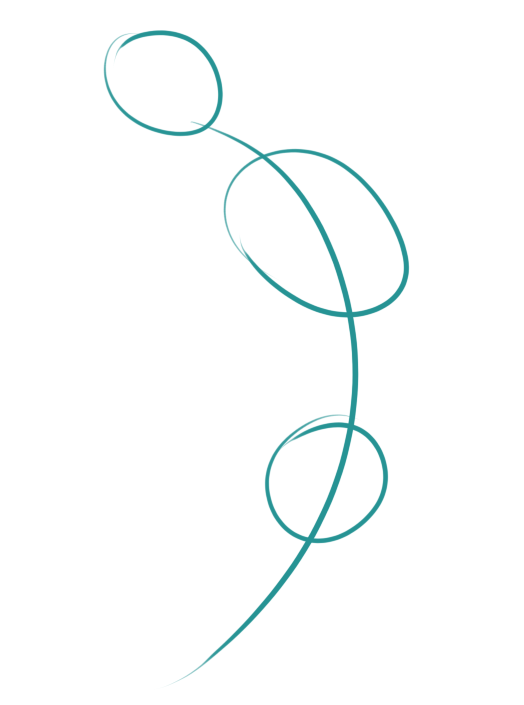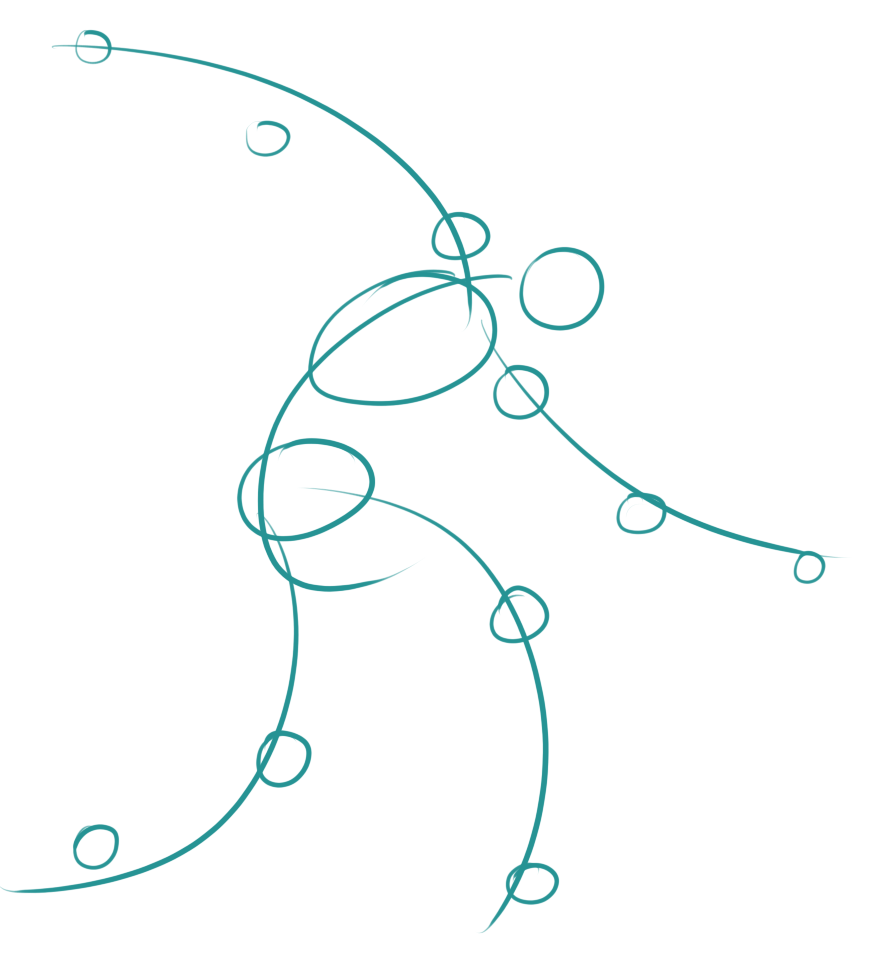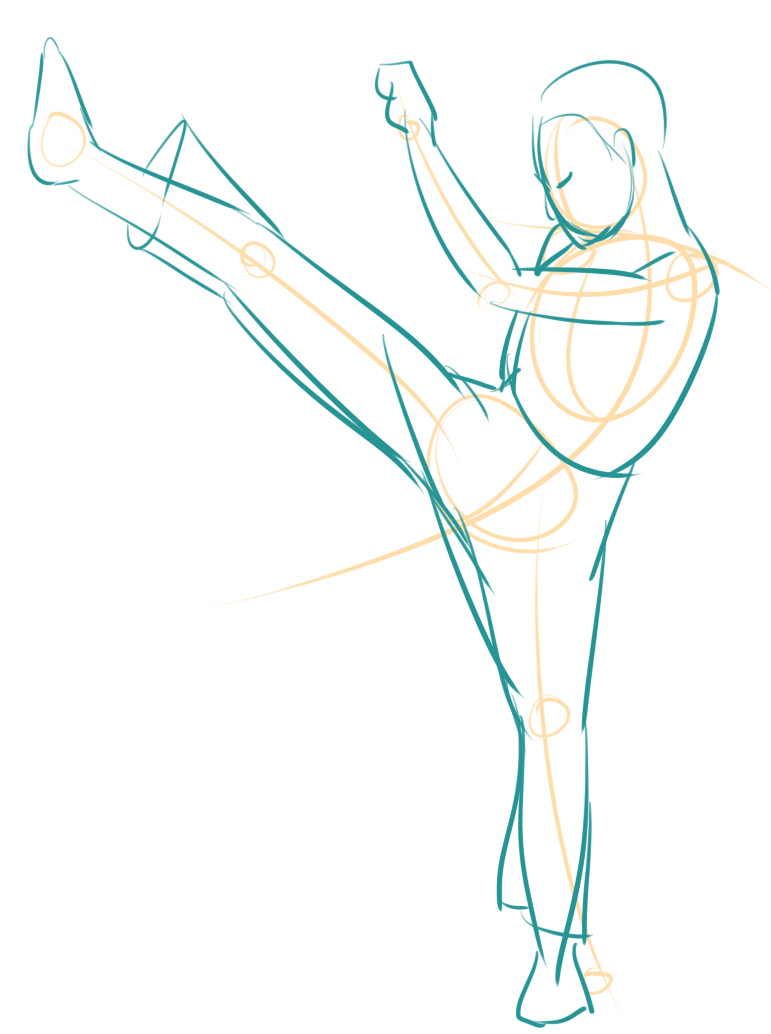How To Draw Figures Book For Experts
Want to learn to draw? This free, hands-on tutorial will walk you through the nuts of a professional person drawing practice in about 15 minutes. Grab a pencil and paper and follow along!
Interactive drawing tutorial tool
Just selection your settings and hit the "get drawing" button to begin.
Be aware: This tool uses NUDE models, both male and female, unless you turn this setting off.
Comprehend and Wearable:
Include:
Notes from the above tutorial
Gesture cartoon is a commonly used practice to gear up your brain to meet the "important" parts of a pose, and forbid you from getting bogged down in the details. Thus, it's a very pop warm up before a drawing practice, and normally used in university drawing courses to teach students skilful exercise habits. We'll starting time there likewise.
Draw the line of activeness
We're going to kickoff with the "line of action" exercise.

Whether from life or from imagination, the first mark made in nearly figure drawings is the line of action. You lot can start past thinking of the line of action as an imaginary line that runs down the spine. It is meant as the simplest possible clarification of a figure's main curve and strength. The more curve yous put into that line, the more than attitude, force and/or motion the image will communicate.
Some artists make two lines of action -- one for the body, and i for the arms.
Somewhen, you should be able to identify and draw the line of activity within five seconds of seeing a pose for the get-go fourth dimension. All the same, if this is your first time doing this exercise, allow yourself upwardly to 30 seconds to examine a pose and make a determination about what shape its line of action might exist. Endeavour to make curves, not S-shapes or squiggles.
Once you can recognize the line of action in thirty seconds, endeavor speeding up -- run into if you tin can identify it and put it down on your paper in xv seconds, 10 seconds, or even 5 seconds! Retrieve, you lot only demand to identify and record a unmarried line to successfully complete this do.
Why do this practice? This do teaches your encephalon to see the figure as a whole, rapidly place the essential essence of what makes a pose interesting, and sets you up to be a stiff visual communicator.
Hang the head, ribcage and hips

Once you have established the line of action, information technology becomes easier to etch dynamic, expressive poses by "hanging" the head, ribcage and hips forth this line. These are the "3 movable masses" that compose the main trunk of the human being body.
Even if you lot're just starting out, give yourself no more than 1 minute for this exercise -- find the line of action as apace as possible, and then identify your three movable masses along information technology.
If y'all take extra time, y'all can ever add more to your drawing, but that's not required right now.

Again, gradually speed up this practice until you find you lot can identify the line of action and place the iii movable masses in 60 seconds, 45 seconds, 30 seconds, maybe even 15 seconds!
Many new artists are concerned when their brusk exercises don't await like much but lines and bubbling. This is a setup for disappointment and failure! Remember, these are exercises, non completed drawings. If you lot were learning to dance, you'd start every do with physical workout like button-ups, and non worry that a push-upward does not look like a dance. Information technology'southward the same idea hither.
Capture the limbs

At present, when yous've completed the line of action and the head, rib cage and pelvis, add either lines or long ovals to capture the limbs. Requite yourself no more than ii minutes to capture the line of action, the 3 movable masses, the limbs and the joint locations.

Take special annotation of the major joints in the body like the shoulder, elbow, wrist, hip socket, knees and ankles -- you lot may wish to add a dot or a chimera to indicate where these joints are. These are the attachment and pivot points for your limbs.
Remember: If yous take extra time, you tin can add more to your drawing, but that's not required right now.
From exercise to finished pose

"Under drawings" like these can become the footing on which you lot draw longer, finished artworks, giving you clues about the whole figure fifty-fifty as you lot start to focus in on details. Or, they can remain stand-alone exercises.
A few tips: Avoid over-focusing on details. In the time it takes y'all to depict one eye, you might also be able to get downwards an unabridged border of the body that tells a better story near the complete pose.
Give yourself room to piece of work! You may want to accept up a total page with your longer drawings.
If you like, you tin endeavour to make beautiful artworks. Just you volition learn more than right now if you treat your practise sessions every bit making visual notes about what shapes you think the body is made of and contains.
We recommend yous write today'due south date and the length of time you simply spent on that drawing on your sketch, so you can see your improvement over time.
Our "class-fashion" will take you through brusque poses to warm yous up, then gradually introduce longer poses, following the format of university figure study classes.
Beyond gesture cartoon
Gesture cartoon is a great foundation skill, simply of course there is so much more than to becoming a capable artist. That's why we have an ever-growing wealth of practice suggestions in the Lessons & Tips session. You can too visit the forums to see what other self-taught artists are doing to hone their craft.
Source: https://line-of-action.com/learn-to-draw
Posted by: ozunaweland.blogspot.com


0 Response to "How To Draw Figures Book For Experts"
Post a Comment